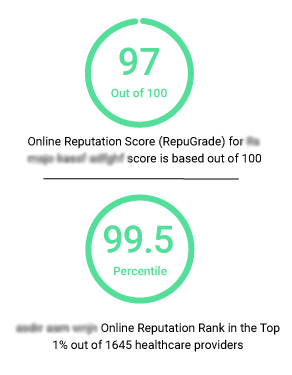Flat Web Design: Everything You Need to Know

Flat design has become a widely favored technique by web developers in recent years, as it emphasizes minimalism in the user interface (UI) designs. Some of the largest tech companies have shifted to flat design for their blogs and UI. It is the basis for responsive design, which has resolved compatibility issues for mobile devices. Here are the main elements you need to know about flat web design for your projects:
Purpose and Focus
Flat UI design is defined as imagery without a third dimension that appears to be lying on a flat surface. Simplistic visual style is the essence of flat design. It avoids drop shadows, gradients and textures in images, backgrounds, buttons and UI for websites and web applications. The focus is on using basic elements, typography and flat or bright colors and functionality so that web pages load as fast as possible. Information is presented in a clean easy-to-read format. Icons depicting action that are readily identifiable are essential to this style while objects that have no function are viewed as clutter.
Difference from Other Designs
Flat web design is distinguished from material designs and skeuomorphism. A skeuomorph is an embellishment derived from original objects. While it's often applied to visuals, it can also involve sonic imitation or other simulations. It's been a part of design systems since the late nineteenth century and has become common for mobile interface displays. Any image that simulates the real world, such as a keyboard, represents a skeuomorph in graphic arts.
Material design is a set of graphic standards developed by Google, particularly for Android and animations. The concept merges skeuomorphism with flat design by overlapping two-dimensional planes, creating the appearance of 3D images with drop shadows. It's similar to the flat design in the sense that it maintains a user-friendly minimal aesthetic.
A Brief History of Minimalistic Art
The concept of minimalism in art emerged as a trend in the late nineteenth century, known as modernism, which contrasted earlier art associated with the science of enlightenment and the emotion of romanticism. It was also an alternative to detailed realism with more focus on bare essentials that convey objective messages. The German art school Bauhaus incorporated modern design and had a huge impact on architecture, graphic arts and typography in its merging of function and form.
Another influence on the minimalistic approach to flat design was the advent of International Typographic Style. As a product of Switzerland in the 1950s, this form of graphic design for text is also known as Swiss Style. It led to the development of basic sans-serif fonts such as Helvetica. While fancy design can sometimes imply embedded philosophy, more objective and legible looking font has a universal appeal, which is why it became accepted internationally.
The idea of elaborate art in computer graphics and fonts began to take shape as Steve Jobs envisioned computers as being more than office machines for calculating statistics and processing reports. Starting with the Mac in 1984, he helped usher in the age of more artistic tools for graphic artists and more picturesque user interfaces, which was a move away from minimalism.
The Rise of Flat UI Design
Even though Apple's iOS interface was popular with early iPhones that revolutionized mobile devices starting in 2007, its skeuomorphic design was eventually overshadowed by competitors. Apple shifted from skeuomorphism toward flat design starting with iOS 7 in 2013, two years after the death of Steve Jobs. One of the problems with more detailed life-like designs is that it takes up more screen space, which presents compatibility issues with mobile devices.
The fact that flat UI designs are more practical and efficient with faster loading speeds has been the driving force behind its adoption by big tech companies. Microsoft has been a leader in the move toward minimalism, particularly with the two-dimensional Windows 8 user interface. Other developments that paved the way for the flat approach were HTML5, CSS3, and modern JavaScript, as the source code has become more advanced, now having interactive capabilities once required by image processing tools.
What Makes Flat So Unique
The point of the flat approach is not to be dull, but to prioritize functionality over appearance. It eliminates unnecessary visual elements that slow down web pages, helping readers consume content quicker. In order for it to be effective, images must be vivid and obvious, not just any simple stick figure characters. The text must be crisp, clear and to the point, typically using sans-serif typography.Advantages of Flat Design
Adaptability for multiple uses is one of the strongest arguments for flat designs. Simplicity is the key to why it has a professional and consistent appearance across a wide range of devices and platforms. Images look sharp and can resize easily regardless of the device, screen size, operating system or browser. Another crucial argument for flat designs is that they correspond with the intent of the internet, which is to provide quick information, as search engines judge sites more on content and usability rather than appearance. In that sense, it's potentially much more SEO-friendly than a fancy website full of fluff.
Issues Needing Improvement
One of the common criticisms of flat design is that it isn't artistic enough. Users sometimes get confused by the lack of drop shadows as to whether or not buttons are clickable. Taken to extremes, it can lead to a generic looking site, which aesthetic-oriented developers guard against. It's important for every website to have unique qualities so that it doesn't get confused with hundreds of other similar sites.
The Future of Flat Design
Will flat design turn out to be another passing fad or is it here to stay? The developer community is split on this question, but if history provides clues, then chances are that parts of it will evolve with respect to visual appeal, with the understanding that styles come, go and return. But for now, flat design is not so much a trend as it has become the established norm and a useful step in the evolution of the web.
Related Posts From the Blog
Comments are closed


